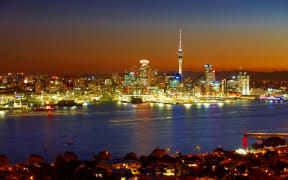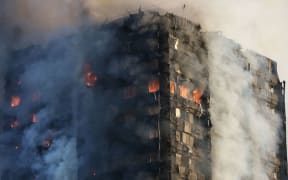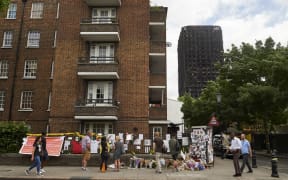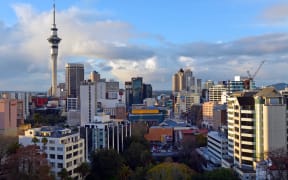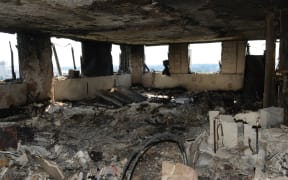Analysis - British authorities are pulling aluminium composite panels off 600 tower blocks for urgent laboratory testing to find out how flammable it is, at a rate of 100 tests a day.
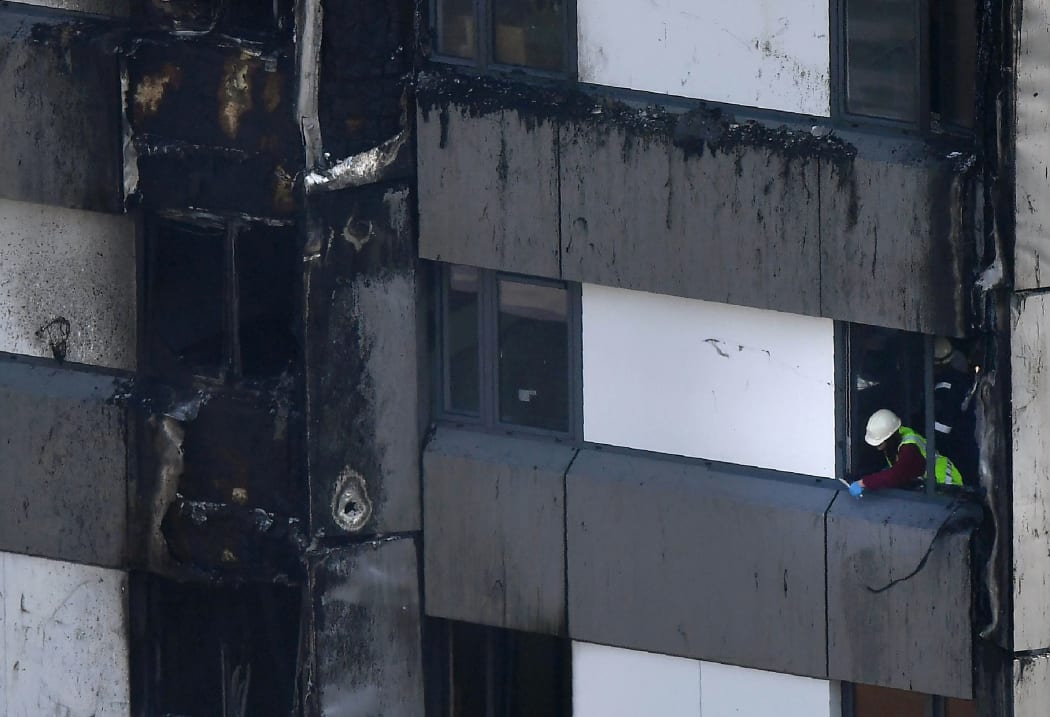
Untouched cladding on the burnt out upper floors of the Grenfell Tower block in a photo taken on 14 June 2017. Photo: AFP
Cladding is thought to have contributed to the rapid spread of fire at Grenfell Tower in London in which at least 79 people are believed to have died.
Britian is ripping through its testing at a rapid clip but New Zealand is not following suit. Phil Pennington asks why not?
- None of the councils can force building owners to take retrospective action if they have got compliance certificates for their building, even if it has combustible cladding.
- Building Code changes this year restricting the use of combustible panels are not retrospective unless a building owner does some types of alterations, or if the ministry orders it, and it hasn't.
- The ministry is making suggestions only - that councils "should" approach building owners, who "should" check with fire engineers. Anything heavier, like a coercive order on a private property owner that could affect market values, is not being hinted at.
- Instead, to determine if a building's cladding is combustible, the Auckland Council is combing through building inspection records, producer statements by suppliers and fixers, and information from cladding suppliers. It has been working for months and is less than a quarter of the way through scrutinising its list of 90 high-rises.
- The Christchurch City Council and Wellington are way behind that, having only begun their checks in recent days.
- Even if, after all the checks, all the paperwork looks good, it can still be unreliable. Sometimes quality products get substituted for cheaper ones on the building site. But because the three grades of aluminium composite panels (of which only one combustible) all look alike, it's not possible to tell which it is.
- Which leads back to the type of quick invasive tests the UK is doing, as those tests don't lie. But in this country, unless the ministry steps in, this would require the consent of building owners who might not agree.
- Building and Construction Minister Nick Smith said if they found any building with extensive combustible panels then they would reassess that building's fire safety. But this raises the problem of liability: Who pays if that assessment finds the building should be re-clad because the council has already signed it off as compliant under the building code that existed at the time?

